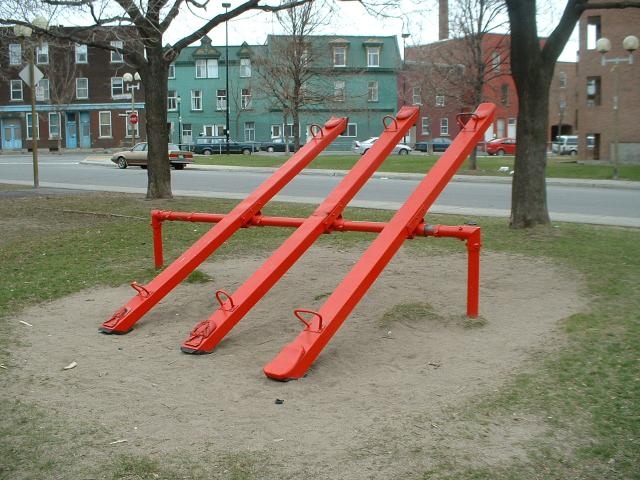"Seesaw-aa". Licensed under Public domain via Wikimedia Commons.
A seesaw (also known as a teeter-totter or teeterboard) is a long narrow board pivoted in the middle so that, as one end goes up, the other goes down.
The most common playground design of seesaw features a board balanced in the center. A person sits on each end, and they take turns pushing their feet against the ground to lift their side into the air. Playground seesaws usually have handles for the riders to grip as they sit facing each other. One problem with the seesaw's design is that if a child allows himself/herself to hit the ground suddenly after jumping, or exits the seesaw at the bottom, the other child may fall and be injured. For this reason, seesaws are often mounted above a soft surface such as foam or wood chips.
Seesaws also are manufactured in shapes designed to look like other things, such as airplanes, helicopters, and animals.
Seesaws, and the eagerness of children to play with them, are sometimes used to aid in mechanical processes. For example, at the Gaviotas community in Colombia, a children's seesaw is connected to a water pump.
Seesaws go by several different names around the world. Seesaw, or its variant see-saw, is a direct Anglicisation of the French ci-ça, meaning literally, this-that, seemingly attributable to the back-and-forth motion for which a seesaw is known.
The term may also be attributable to the repetitive motion of a saw. It may have its origins in a combination of "scie" - the French word for "saw" with the Anglo Saxon term "saw." Thus "scie-saw" became "see-saw."
From Wikipedia


